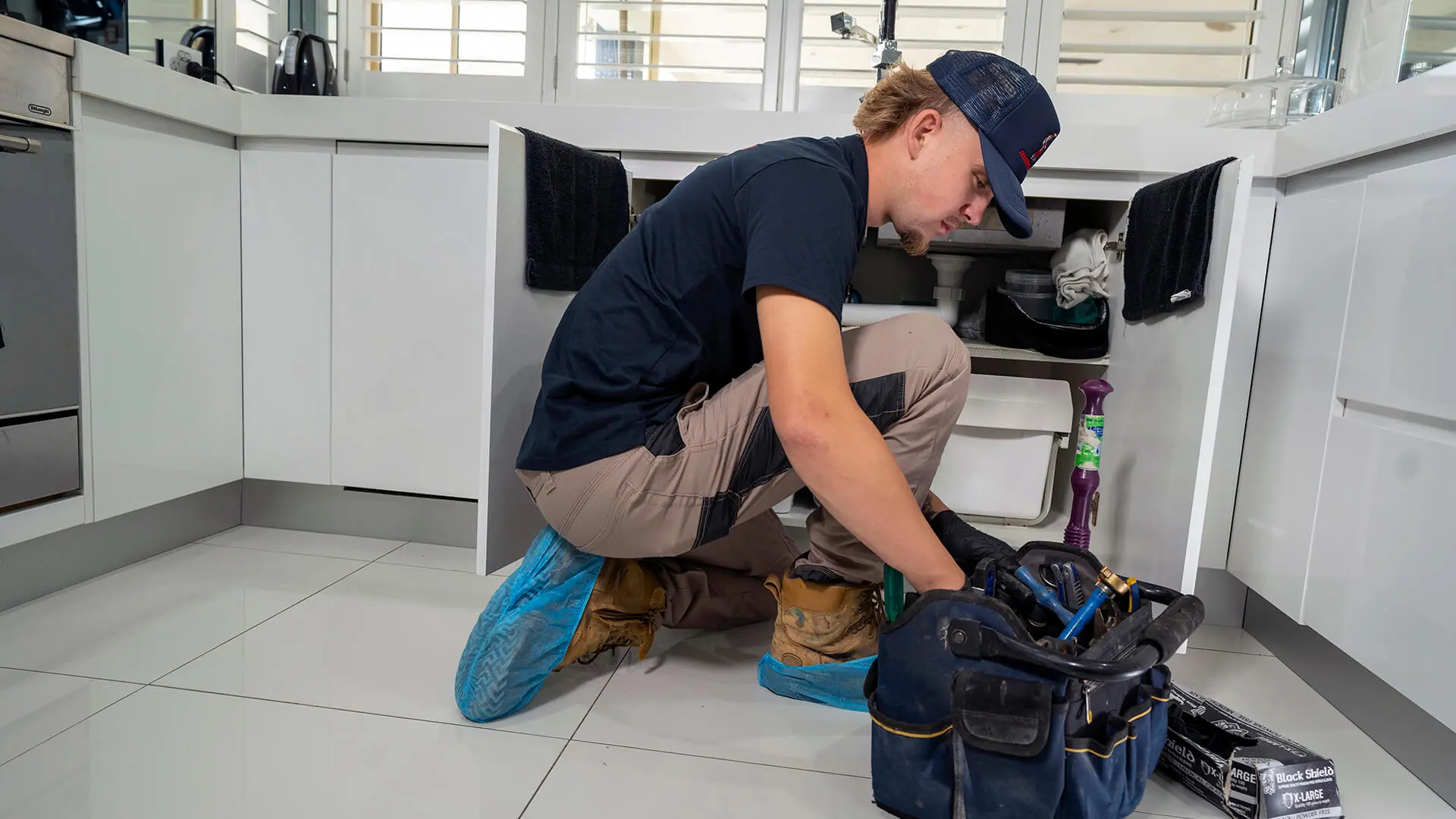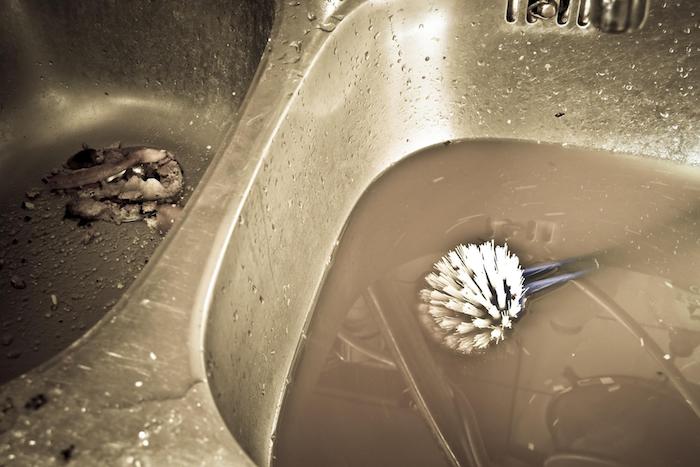Top Tips For Repairing A Slow-Draining Sink Fast
Top Tips For Repairing A Slow-Draining Sink Fast
Blog Article
What're your opinions with regards to Solved! How to Fix a Slow Sink Drain?

Intro
We have actually all existed: You're cleaning your teeth or cleaning your hands, and you see the water merging in the sink. As opposed to promptly swirling away, it remains, transforming your once-refreshing morning regimen right into a miniature overload scene. A slow-draining sink isn't just aggravating; it's usually an indicator of larger plumbing issues hiding below the surface. The good news is that the majority of slow-draining sinks can be repaired with a little know-how, a couple of basic devices, and some patience. Prepared to tackle this task head-on? Let's roll up our sleeves and dive right in.
Understanding the Root Causes Of a Slow-Draining Sink
Prior to you start poking around in your pipes, it helps to understand what might be triggering the stagnation. Understanding the root cause makes it much easier to pick the right repair.
Typical Perpetrators Behind Slow Water Drainage
So, what's clogging points up? Generally, it's a mixture of everyday particles-- think hair, soap scum, toothpaste residue, and leftover food fragments. With time, these tiny bits accumulate and hold on to the pipeline wall surfaces, gradually tightening the flow and making it harder for water to travel through. In some cases, mineral deposits from tough water can additionally contribute to the gunk, developing the best storm for persistent blockages.
When is it Time to Take Action?
If you see the water draining pipes slower than usual, it's an excellent idea to interfere quicker as opposed to later. Waiting also long might bring about complete obstructions, undesirable smells, and even pipe damage. If the water takes more than a few secs to clear out after switching off the tap, consider it a red flag and prepare to place on your do it yourself hat.
Tools and Products You'll Need
The right tools make all the distinction. Luckily, you will not require a fully stocked plumbing technician's van to do the job.
Essential Tools for DIY Repairs
A bettor is your best beginning factor. A tiny, sink-sized bettor produces suction that can remove minor blockages. For more consistent blockages, a drainpipe serpent (occasionally called a plumber's auger) functions wonders. A set of handwear covers, a flashlight, and possibly a pair of protective goggles are also convenient.
Suggested Cleaning Solutions
Light dish soap and warm water can assist break down greasy accumulation. A mixture of cooking soft drink and vinegar is a time-tested home remedy, and enzymatic cleansers offer a more environmentally friendly approach. Keep chemical drain cleansers as a last resource, as they can be rough on your pipelines.
Security First: Preventative Measures and Prep work
Before you launch into unclogging mode, think about security. You're managing possibly unclean water and particles, so slip on a pair of gloves. If you're making use of chemical cleaners, make sure the room is well-ventilated and adhere to the directions on the label.
Protective Gear and Office Arrangement
Put down some old towels or dustcloths around the sink area to capture splashes. Clear away any kind of things that may get in your way, like soap dispensers or tooth brush owners. Make certain you have great lighting-- get hold of a flashlight if needed.
Step-by-Step Overview to Taking Care Of a Slow-Draining Sink
Currently, let's get involved in the nitty-gritty. This detailed process will certainly direct you via simple techniques to recover your sink's drain.
Action 1: Remove and Clean the Stopper
Frequently, the stopper (that small plug you lower to obstruct water) is the first wrongdoer. Remove it carefully and wipe any hair or crud trapped around its base. Rinse it extensively before putting it back in place.
Action 2: Use a Plunger to Displace Debris
Got that bettor prepared? Placement it over the drainpipe and provide it a few company pumps. The concept is to create suction that can loosen any type of clog. If you see littles debris floating up, you get on the appropriate track.
Action 3: Try a Drain Serpent or Cord Wall Mount
If the plunger does not suffice, it's time to draw out the drainpipe serpent. Carefully feed it right into the drainpipe and twist as you go. You may feel some resistance-- that's most likely the blockage. Maintain twisting and pulling till you eliminate the blockage. If you don't have a drainpipe snake, a straightened out cord wall mount can work in a pinch.
Tip 4: Apply a Do It Yourself Drainpipe Cleaner
An all-natural cleaner made from cooking soda and vinegar can break down residual gunk. Put half a cup of cooking soda right into the drain, followed by half a cup of vinegar. Allow it fizz for about 15 minutes, after that flush with hot water. This chain reaction frequently does wonders for small obstructions.
Tip 5: Rebuild and Evaluate the Sink
Placed every little thing back together and run the faucet. Does the water currently swirl away at a respectable rate? If yes, offer on your own a pat on the back. Otherwise, do not anguish-- there are still a few more tricks up your sleeve.
Different Approaches for Stubborn Clogs
Not all obstructions are created equal. If your sink still declines to coordinate, take into consideration these different solutions.
Baking Soda and Vinegar Approach
We already touched on this, but it deserves noting again. This gentle, environmentally friendly method is much safer than chemical cleaners and commonly rather efficient.
Chemical Drain Cleansers
Enzyme-based cleaners use all-natural bacteria to absorb organic matter. They're an excellent option if you're wanting to stay clear of severe chemicals. Just keep in mind, they may take a bit longer to function their magic.
Chemical Drainpipe Cleansers: Benefits And Drawbacks
Chemical cleansers can blast through difficult clogs quickly, however they're not without drawbacks. They can create warm and fumes, damages pipes if made use of exceedingly, and pose ecological dangers. Use them moderately, and constantly adhere to the instructions meticulously.
Safety Nets to Maintain Your Sink Flowing
Avoidance is the most effective treatment. By embracing a few straightforward behaviors, you can keep your sink from slowing down to begin with.
Regular Cleansing Routines
Clean down the sink basin and component area on a regular basis. Remove hair or food fragments prior to they have a chance to wash down the drainpipe.
Avoiding Harmful Compounds Down the Drain
Reconsider prior to disposing coffee grounds, grease, or fibrous veggie scraps down the sink. These culprits hold on to pipe walls, producing blockages with time.
Regular Maintenance Checks
Schedule a quick regular monthly evaluation. Run warm water with the sink for a few mins, focusing on the circulation. If it seems slow, act quick prior to it ends up being a full-blown blockage.
When to Call an Expert Plumbing Technician
Occasionally, despite exactly how hard you try, that obstruct just will not move. That's when it's time to bring in the pros.
Indicators That Suggest a More Significant Problem
If your sink drains gradually despite multiple attempts, or if you discover water backing up in other fixtures (like your shower or toilet), you might have an extra significant pipes concern lurking deeper in the system.
Balancing Do It Yourself Initiatives with Specialist Help
While do it yourself can conserve you money and supply a sense of success, there's no shame in calling a professional. A specialist plumbing technician can assess your entire plumbing configuration, ensuring there's no underlying damage or long-term issue that might cost you more in the future.
Contrasting Expenses and Long-Term Solutions
Prior to making a decision, take into consideration the big picture. A low-cost, quick fix may solve the trouble briefly, however investing in an extra long-term option might conserve you money and stress and anxiety over time.
Weighing the Costs of Do It Yourself vs. Professional Repairs
DIY repairs usually set you back little more than the cost of a bettor or a container of cooking soda. Professional solutions, on the other hand, come with a cost but might prevent repeated concerns and pricey repair work later on.
Investing in High Quality Fixtures and Upgrades
If your sink's layout adds to frequent blockages, it could be worth upgrading to higher-quality fixtures or altering the plumbing design. Consider this an investment in your home's functionality and comfort.
Conclusion
A slow-draining sink can feel like a small irritability, but it's often an indication that your pipes requires a little tender loving care. By understanding the source, using the right tools and strategies, and dedicating to basic safety nets, you can keep your sink flowing openly. And when all else falls short, never hesitate to hire a professional-- your home's pipes is worth the financial investment in care and upkeep.
4 Tips to Fix a Slow Draining Sink
Removing the Pop-Up
This is a great place to start when it comes to troubleshooting a slow draining sink. If your sink has a pop-up, carefully take it out and remove debris that has built up around the tool. This will also allow you to see if there are any significant blockages in the drain that you can pull out on your own to help clear up the issue.
Use a Zip-It Tool
Like a snake for a large drain, a zip-it tool helps clear out any debris or hair from a sink drain. A tool like this can be used with a drain that pops out or not as it s thinner than most snake-like tools.
Use a Drain Cleaner
Whether making an at-home cleaner or buying a solution at the store, this is a common fix many turn to when it comes to a slow draining sink. There are several options available for purchase at local supermarkets, but for those who prefer to create their own solution, one of the most common is the following.
How to Unclog a Drain Naturally
Pour boiling water down the drain Pour cup of baking soda down the drain Pour cup of vinegar down the drain Wait 10 minutes Pour boiling water down the drain again Turn on the hot water faucet to clear out the solution Use a Plunger
As a worst-case scenario option, a plunger may be a good option for those who are still struggling to get debris out of their drain. This could be especially useful if there is a large item that you suspect may be significantly stuck down the drain.
https://www.abaileyplumbing.com/blog/2021/august/4-tips-to-fix-a-slow-draining-sink/

I have been very drawn to 7 Ways To Fix A Slow-Draining Sink Before You Call A Plumber and I am hoping you enjoyed reading the entire blog posting. Remember to take a moment to share this article if you appreciated it. We cherish your readership.
Schedule Now! Report this page